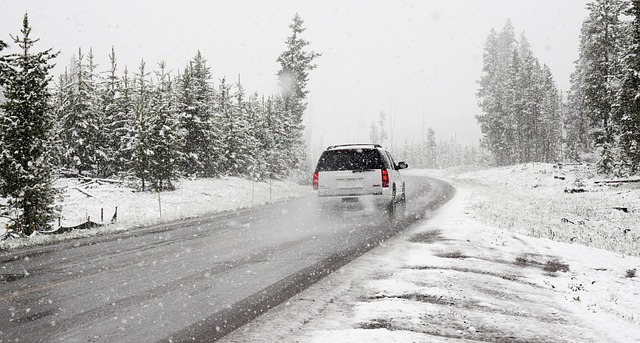Motorcycle Insurance Essentials: What Every Rider Needs
Understanding motorcycle insurance helps riders protect their bikes, health, and finances. This guide breaks down essential coverage types, explains how premiums are calculated, outlines optional add-ons like roadside assistance and agreed-value coverage, and offers practical tips to lower costs. Get the clarity needed to compare policies and choose the right protection for your riding style and budget.

Motorcycle insurance is more than a legal requirement in many places; it provides financial security and peace of mind for riders. Knowing what coverage options exist, how premiums are determined, and which extras can protect both you and your bike will help you select the best policy for your needs and riding habits.
Core coverage types every rider should know
-
Collision coverage: Pays to repair or replace your motorcycle if it is damaged in a collision with another vehicle or an object. This applies regardless of who caused the crash, depending on your policy terms.
-
Comprehensive coverage: Covers damage from events other than collisions, such as theft, vandalism, fire, falling objects, or severe weather. It fills gaps that collision insurance doesn’t address.
-
Personal injury protection (PIP): Covers medical costs for you and your passengers after an accident, often regardless of fault. PIP can include hospital bills, rehabilitation, and sometimes lost wages depending on the policy and state rules.
-
Uninsured/underinsured motorist coverage: Protects you if another driver causes an accident but lacks sufficient insurance (or any insurance) to cover your injuries and damages. This coverage can be crucial in states with high rates of underinsured drivers.
Understanding these basic protections makes it easier to build a policy that matches your exposure and priorities on the road.
How insurers set your motorcycle insurance premium
Insurance companies evaluate several variables to calculate your premium. Key factors include:
- Age and riding experience: Younger or less experienced riders typically face higher rates because statistically they are more likely to file claims.
- Bike make, model, and year: High-performance or rare motorcycles usually cost more to insure due to greater repair costs and theft risk.
- Location and storage: Where you live and where you keep your bike (garage vs. street) influence risk assessments and theft likelihood.
- Driving record and claims history: Traffic violations and past claims raise premiums; a clean history helps lower them.
- Coverage selections and limits: Higher coverage limits and lower deductibles increase the premium, while reducing limits or raising deductibles lowers it.
- Safety features and anti-theft devices: Alarm systems, GPS trackers, and other protections can lead to discounts.
Because insurers weigh these elements differently, shopping around and providing accurate details about your bike and habits can reveal significant price differences.
Additional coverages worth considering
Beyond the basics, riders may want to add optional protections depending on their situation:
- Accessories coverage: Covers custom parts, aftermarket upgrades, and accessories not included in a standard policy’s valuation.
- Roadside assistance: Offers help for breakdowns, flat tires, dead batteries, or running out of fuel while you’re on the road.
- Trip interruption coverage: Pays for lodging, transportation, or other expenses if your bike breaks down far from home during a trip.
- Rental reimbursement: Covers the cost of a rental vehicle while your motorcycle is being repaired after a covered loss.
- Agreed value coverage: Guarantees the insurer will pay a pre-agreed amount if your bike is totaled, avoiding depreciation calculations that can reduce settlement amounts.
These add-ons are particularly useful for riders who travel frequently, own custom or high-value bikes, or rely on their motorcycle as a primary mode of transport.
Practical ways riders can reduce insurance costs
- Bundle policies: Combine motorcycle coverage with auto or homeowners insurance to qualify for multi-policy discounts.
- Raise your deductible: Choosing a higher deductible usually lowers your premium, but make sure you can cover that expense if you file a claim.
- Complete safety courses: Many insurers reward completion of approved motorcycle safety or training programs with discounts.
- Install anti-theft devices: Alarm systems, locks, and tracking devices can reduce theft risk and may lower rates.
- Pay annually: Some insurers charge fees for monthly payments; paying in full can result in savings.
- Keep a clean record: Avoiding accidents and traffic violations over time is one of the most reliable ways to lower premiums.
Combining several of these strategies can produce noticeable savings while preserving adequate protection.
| Provider | Key Features | Unique Offerings |
|---|---|---|
| Progressive | Multi-policy discounts, accident forgiveness | OEM parts coverage, disappearing deductibles |
| Geico | Military discounts, accident-free discounts | Mechanical breakdown coverage |
| Allstate | New motorcycle replacement, rider protection package | First accident waiver, custom parts coverage |
| Dairyland | Flexible payment plans, options for higher-risk riders | Rider loyalty rewards, physical damage plus |
| Markel | Mechanical breakdown coverage, diminishing deductible | Funeral expense coverage, rental reimbursement |
Prices, rates, or cost estimates are based on the latest available information and may change over time. Independent research is advised before making financial decisions.
Choosing the right insurer and policy
Coverage availability, discounts, and legal requirements vary by state and individual circumstances. Start by determining minimum legal coverage where you live, then evaluate whether that level is sufficient for your needs. For valuable bikes, consider agreed value protection and accessories coverage. If you frequently ride long distances, roadside assistance and trip interruption may be worthwhile.
Request quotes from multiple companies and compare not just price but the specific coverages, exclusions, limits, and claims-handling reputation. Read policy documents carefully so you understand what is and isn’t covered.
Final thoughts
Motorcycle insurance protects your financial well-being and your ability to get back on the road after an incident. By understanding core coverages, optional add-ons, how premiums are calculated, and practical ways to reduce costs, you can tailor a policy that fits your riding habits and budget. Review your coverage regularly as your bike, experience, or circumstances change to ensure continued protection and value.






